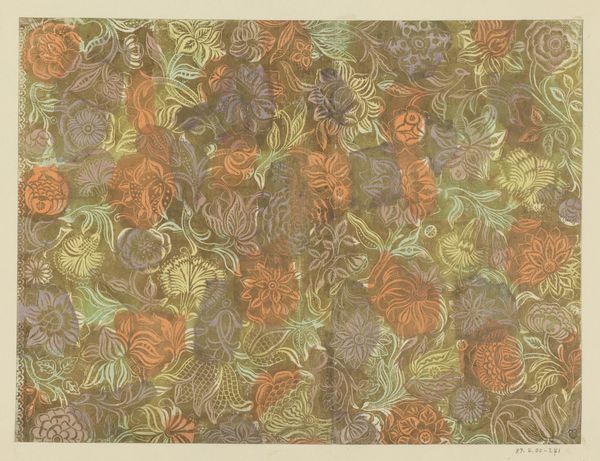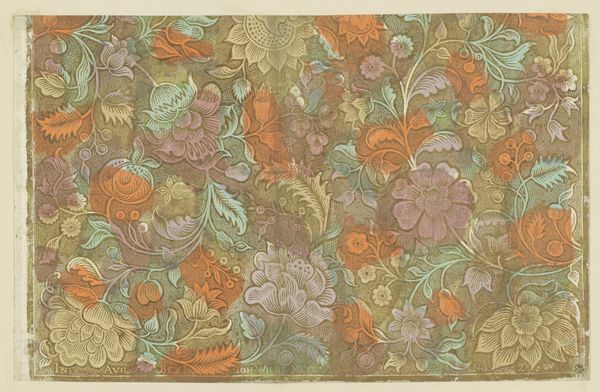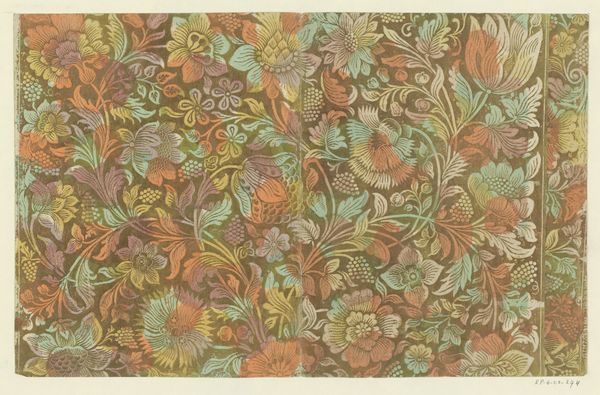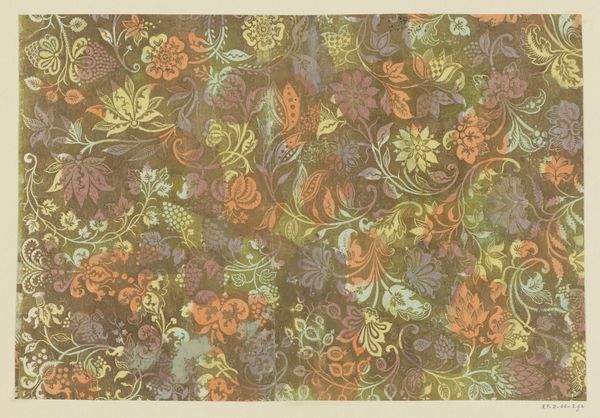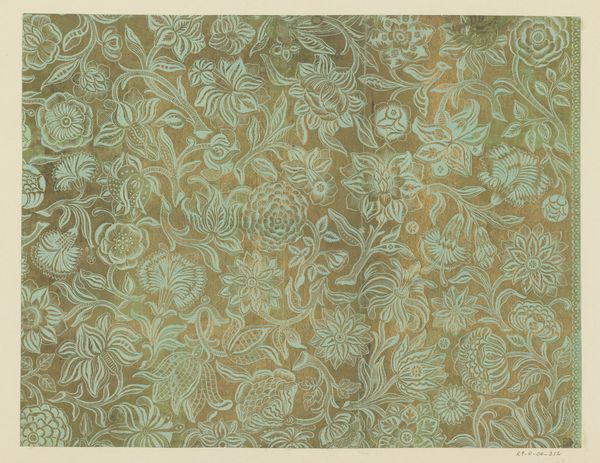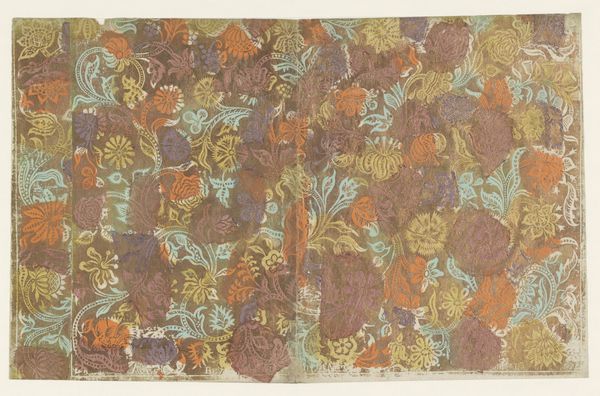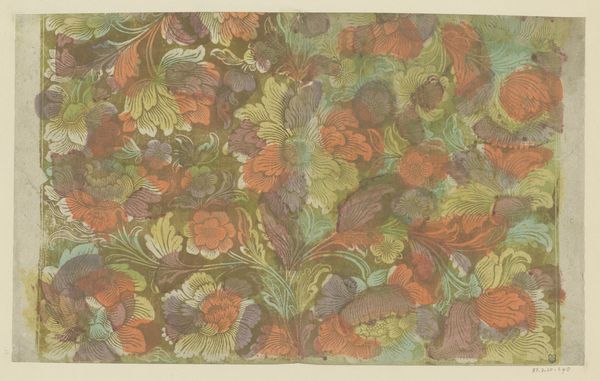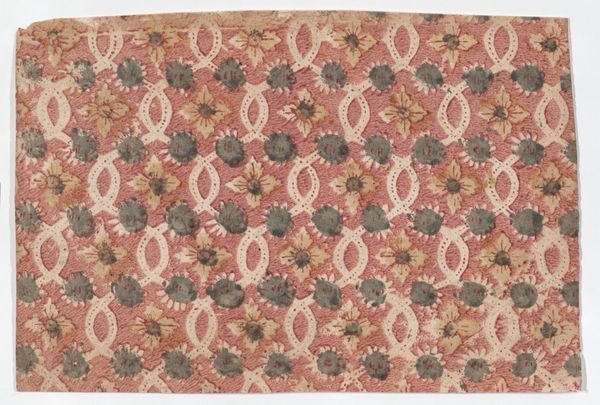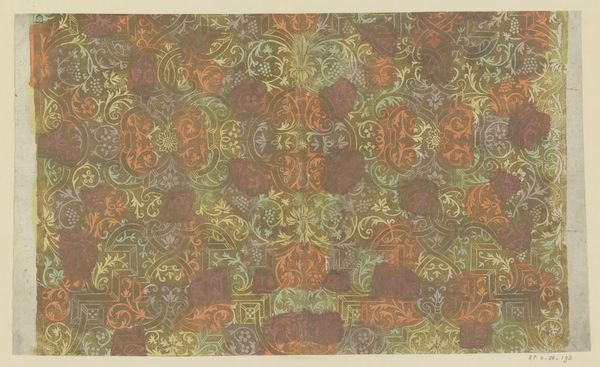
#
natural stone pattern
#
naturalistic pattern
#
pattern background
#
abstract pattern
#
organic pattern
#
flower pattern
#
pattern repetition
#
textile design
#
layered pattern
#
funky pattern
Dimensions: height 267 mm, width 418 mm
Copyright: Rijks Museum: Open Domain
Curator: This is "Blad met bloemranken," or "Sheet with floral vines," attributed to Johann Carl Munck, created sometime between 1750 and 1794. Editor: My first impression is one of opulent decay—the colors are muted, almost like they’ve faded over time, creating a kind of melancholy beauty. Curator: Indeed. The piece presents a dense, all-over floral pattern that likely resonated with ideas of natural abundance and prosperity so popular in decorative arts during that period. But if we look deeper, the individual floral motifs are rendered with incredible detail. One might read each type of flower as holding specific symbolic meaning according to contemporary flower dictionaries, adding layers of narrative for those who knew the floral language. Editor: And speaking of making—one can almost imagine the artisans, perhaps entire workshops, dedicated to the precise repetition of this design. Think of the skill involved in the block printing, the registration of colors…It makes you consider the social hierarchies at play in its creation and consumption. Curator: Exactly! These repeated patterns often served a dual purpose—decoration and the communication of cultural values. Flowers, universally celebrated for beauty, can, at the same time, represent abstract notions like love, faithfulness, or remembrance depending on the flower types represented. The particular bloom's representation might allude to specific events or people from the artist’s, or commissioner's, life, embedding private and sometimes cryptic stories within the visual field. Editor: Thinking about textiles too, they hold stories of global exchange, of access to materials, and, fundamentally, of human touch. The choices made in the piece also suggest deliberate stylistic preferences: from muted tones in this design, maybe some connection to the aesthetics emerging then. The creation of a consumer desire for things which had to be manufactured to this aesthetic. Curator: Considering these intricate relationships gives depth to what may initially seem merely decorative. We begin to understand how imagery acted as a form of language, communicating beyond mere surface aesthetics, encapsulating meaning for contemporary audiences. Editor: Absolutely. This artwork acts almost as a time capsule, bringing a perspective that encompasses aesthetics, history, economics and materiality all in one.
Comments
No comments
Be the first to comment and join the conversation on the ultimate creative platform.

